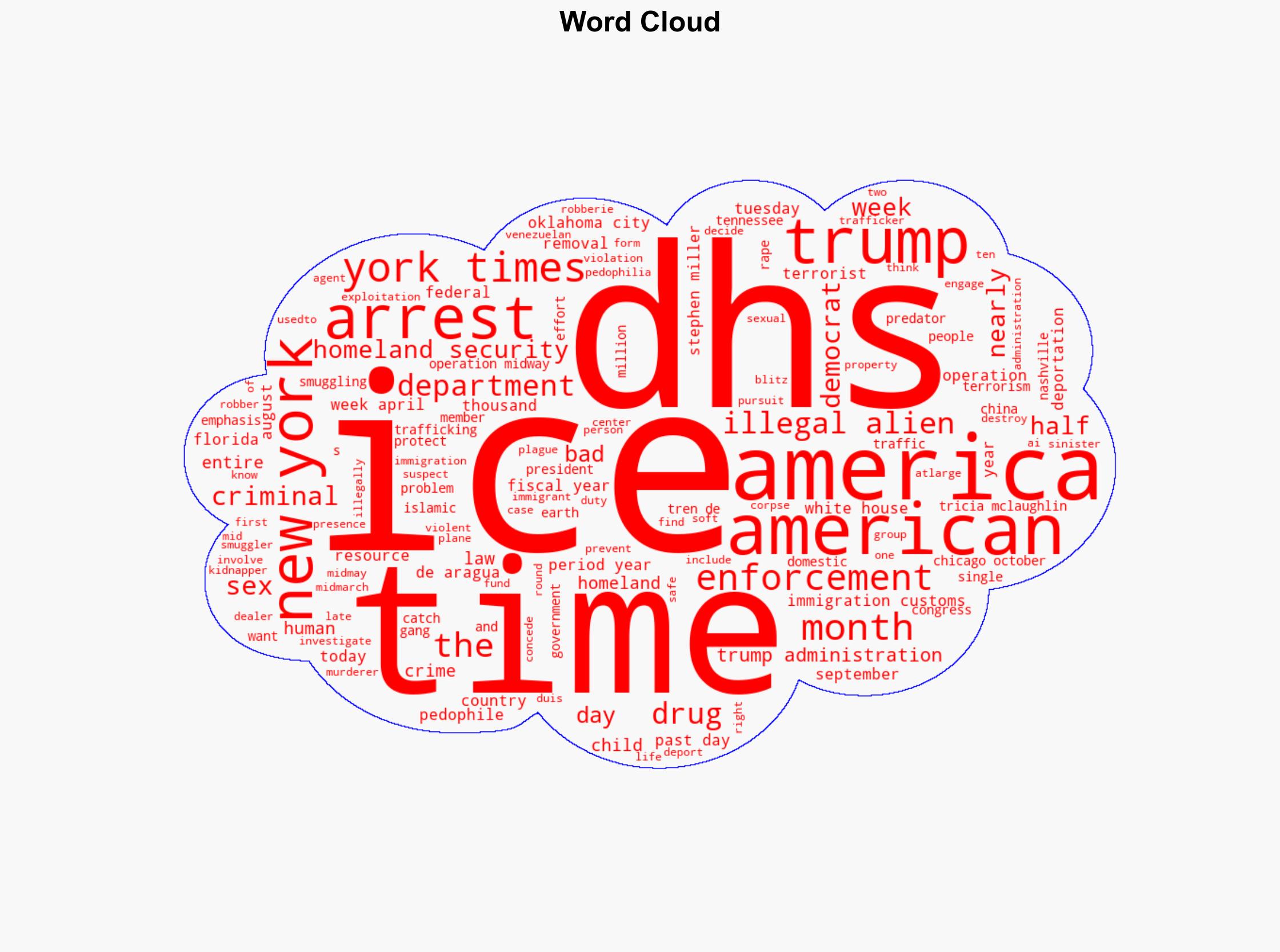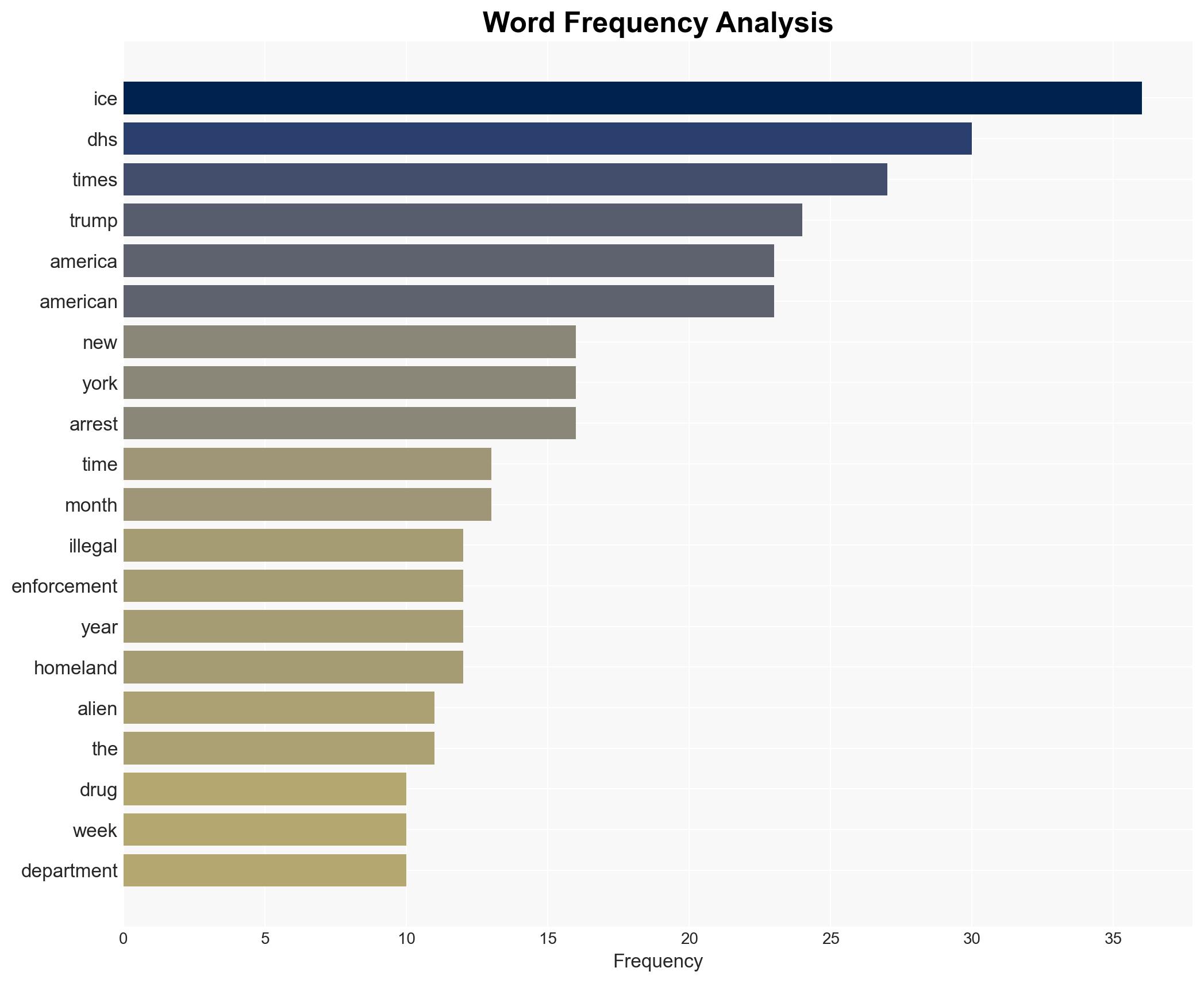The New York Times misfires when it attacks Trumps use of the DHS – Americanthinker.com
Published on: 2025-11-16
AI-powered OSINT brief from verified open sources. Automated NLP signal extraction with human verification. See our Methodology and Why WorldWideWatchers.
Intelligence Report:
1. BLUF (Bottom Line Up Front)
The most supported hypothesis is that the New York Times’ critique of the Trump administration’s use of the Department of Homeland Security (DHS) reflects a broader media narrative that may not fully account for the complexities of immigration enforcement and national security priorities. Confidence Level: Moderate. Recommended action includes a balanced review of DHS operations to ensure both security and civil liberties are maintained.
2. Competing Hypotheses
Hypothesis 1: The New York Times’ critique is primarily driven by political bias and aims to undermine the Trump administration’s immigration policies by highlighting perceived overreach and misallocation of DHS resources.
Hypothesis 2: The New York Times’ critique is a legitimate concern over the potential misuse of DHS resources, which could detract from broader national security objectives and civil rights protections.
Hypothesis 1 is more likely given the historical context of media polarization and the specific language used in the critique, which aligns with broader media narratives critical of Trump-era policies.
3. Key Assumptions and Red Flags
Assumptions include the belief that the New York Times represents a broader media perspective and that DHS operations under Trump were significantly different from previous administrations. Red flags include potential bias in reporting and the lack of comprehensive data on the effectiveness of DHS operations. Deception indicators may involve selective reporting of incidents to fit a narrative.
4. Implications and Strategic Risks
The critique could exacerbate political polarization, influencing public opinion and policy-making. It may also impact DHS morale and operational effectiveness if perceived as politically motivated. Escalation scenarios include increased scrutiny of DHS operations, potential legal challenges, and shifts in immigration policy under future administrations.
5. Recommendations and Outlook
- Conduct an independent review of DHS operations to assess the balance between security and civil liberties.
- Engage in transparent communication with the public about DHS priorities and successes to counter misinformation.
- Best-case scenario: Enhanced understanding and support for DHS operations that balance security and rights.
- Worst-case scenario: Continued political polarization and reduced effectiveness of DHS due to public distrust.
- Most-likely scenario: Ongoing debate and scrutiny of DHS operations with incremental policy adjustments.
6. Key Individuals and Entities
Donald Trump (former President), The New York Times (media entity), Department of Homeland Security (DHS), Immigration and Customs Enforcement (ICE).
7. Thematic Tags
Structured Analytic Techniques Applied
- Cognitive Bias Stress Test: Expose and correct potential biases in assessments through red-teaming and structured challenge.
- Bayesian Scenario Modeling: Use probabilistic forecasting for conflict trajectories or escalation likelihood.
- Network Influence Mapping: Map relationships between state and non-state actors for impact estimation.
Explore more:
National Security Threats Briefs ·
Daily Summary ·
Support us
·





